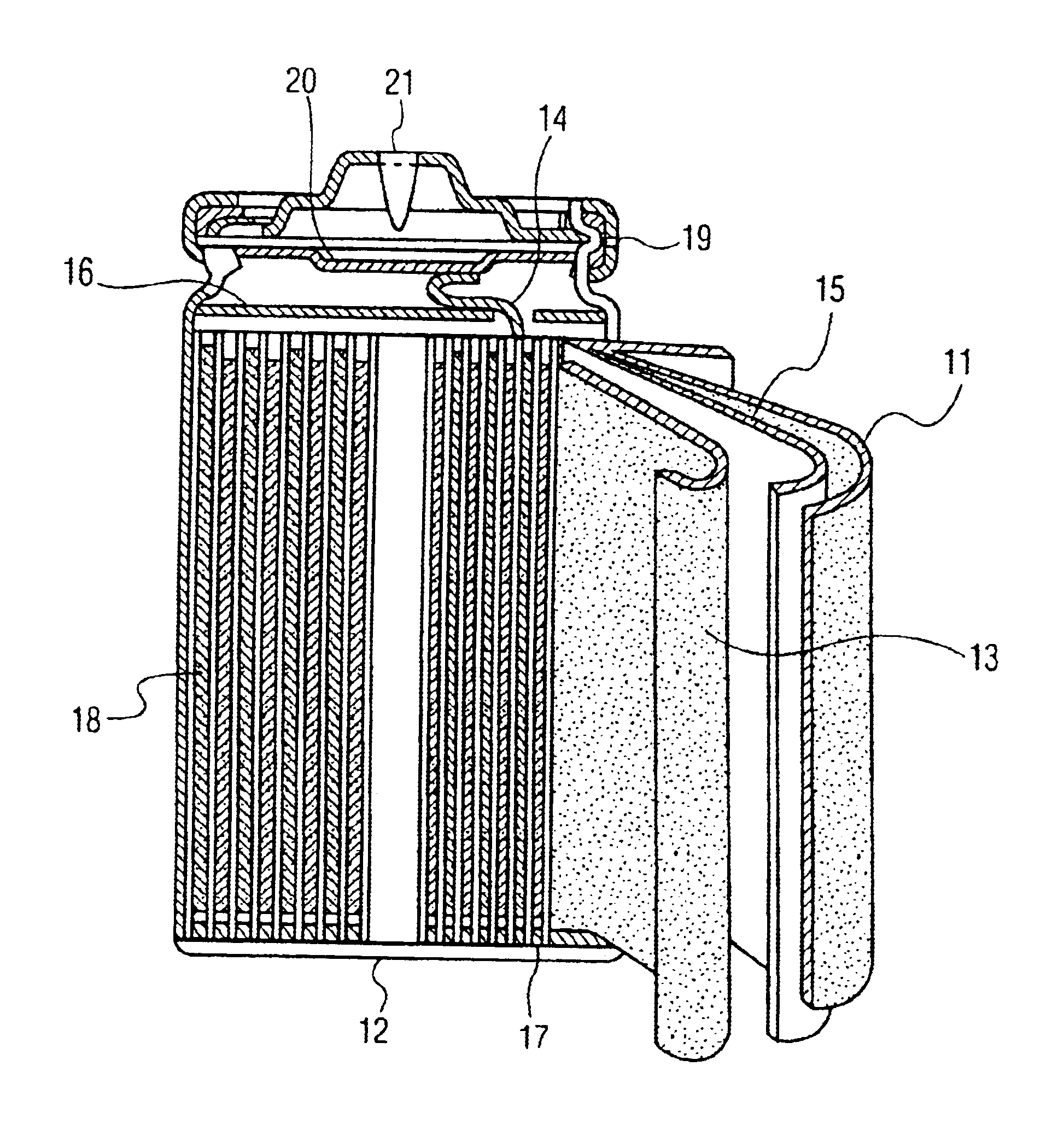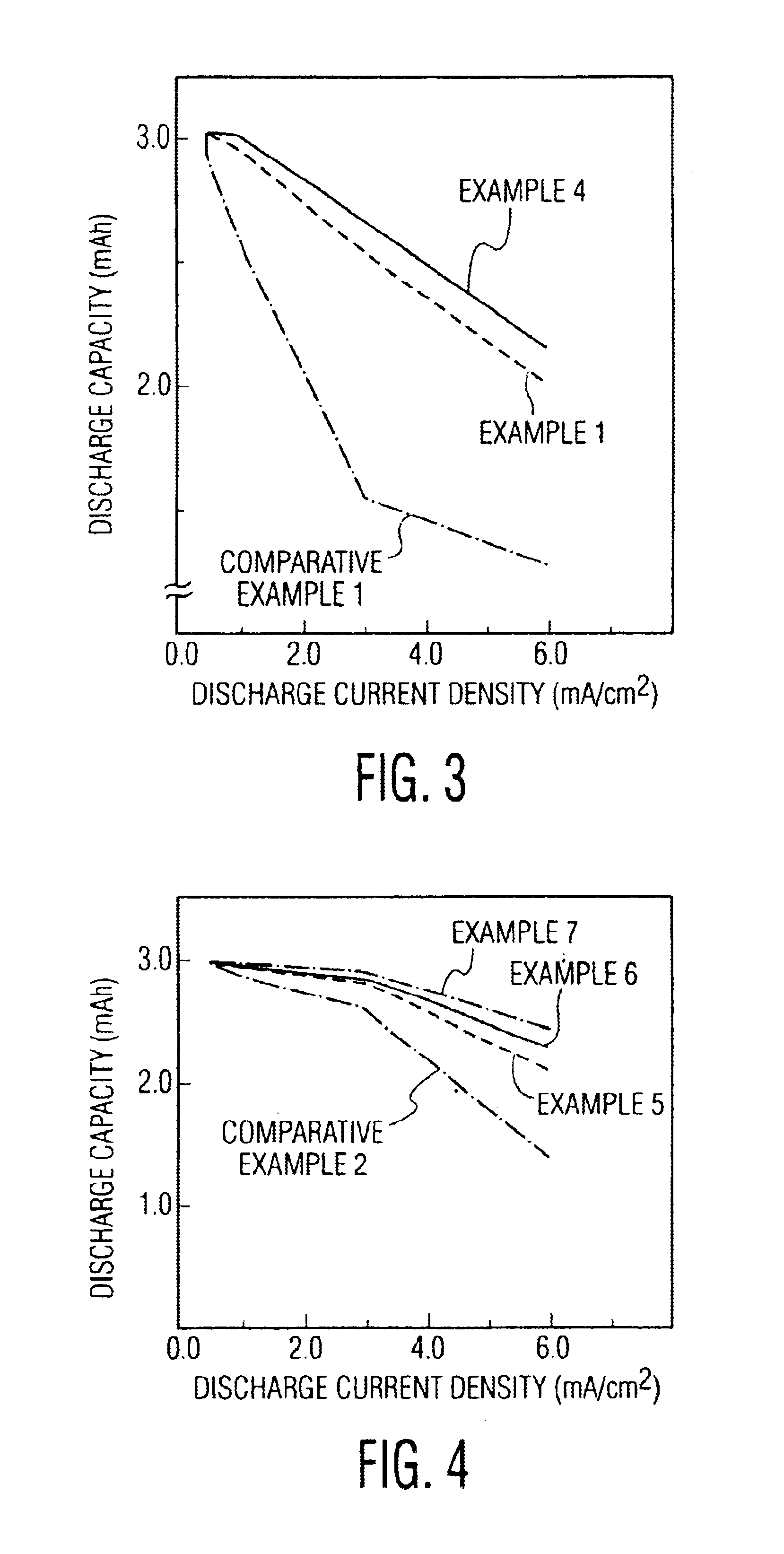Lithium secondary battery
a secondary battery and lithium battery technology, applied in the field of lithium secondary batteries, can solve the problems of abnormal temperature rise of the battery, internal short circuit of the battery, and safety problems that have not been solved, and achieve enhanced ion conductivity, low internal resistance of the electrode, and high capacity
- Summary
- Abstract
- Description
- Claims
- Application Information
AI Technical Summary
Benefits of technology
Problems solved by technology
Method used
Image
Examples
example 1
[0033]Using a polymer electrolyte compound positive electrode mixing Al2O3 particles, a lithium polymer secondary battery of the invention was fabricated.
[0034]FIG. 1 is a longitudinal sectional view of a lithium polymer secondary battery of the invention. In the diagram, reference numeral 1 is a lithium metal negative electrode, and 3 is a compound positive electrode containing polymer electrolyte mixing Al2O3 particles. Besides, reference numeral 2 is a gel polymer electrolyte layer, and 4 is an aluminum-made current collecting foil of positive electrode.
[0035]The polymer electrolyte compound positive electrode 3 mixing Al2O3 particles was fabricated in the following manner. First, as monomer, Al2O3 particles with particle size of 0.5 micron were added by 10 parts by weight to 20 parts by weight of polyethylene glycol diacrylate, and stirred. Adding 0.5 part by weight of thermal polymerization initiator and 70 parts by weight of nonaqueous electrolyte solution, the mixture was sti...
example 2
[0039]The coin type lithium polymer secondary battery of the invention was composed in the same manner as in example 1, except that the particle size of Al2O3 particles to be mixed in the polymer electrolyte compound positive electrode 3 was fixed at 0.5 micron, and that the additive rate in 100 parts by weight of active substance was 5, 10, 20 and 30 parts by weight.
example 3
[0040]The coin type lithium polymer secondary battery of the invention was composed in the same manner as in example 1, except that the additive rate of Al2O3 particles mixed in the polymer electrolyte compound positive electrode 3 was fixed at 5 parts by weight in 100 parts by weight of active substance, and that the particle size of Al2O3 particles was 0.5, 1.0, 10 and 20 microns.
PUM
| Property | Measurement | Unit |
|---|---|---|
| particle size | aaaaa | aaaaa |
| ion conductivity | aaaaa | aaaaa |
| ion conductivity | aaaaa | aaaaa |
Abstract
Description
Claims
Application Information
 Login to View More
Login to View More - R&D
- Intellectual Property
- Life Sciences
- Materials
- Tech Scout
- Unparalleled Data Quality
- Higher Quality Content
- 60% Fewer Hallucinations
Browse by: Latest US Patents, China's latest patents, Technical Efficacy Thesaurus, Application Domain, Technology Topic, Popular Technical Reports.
© 2025 PatSnap. All rights reserved.Legal|Privacy policy|Modern Slavery Act Transparency Statement|Sitemap|About US| Contact US: help@patsnap.com



